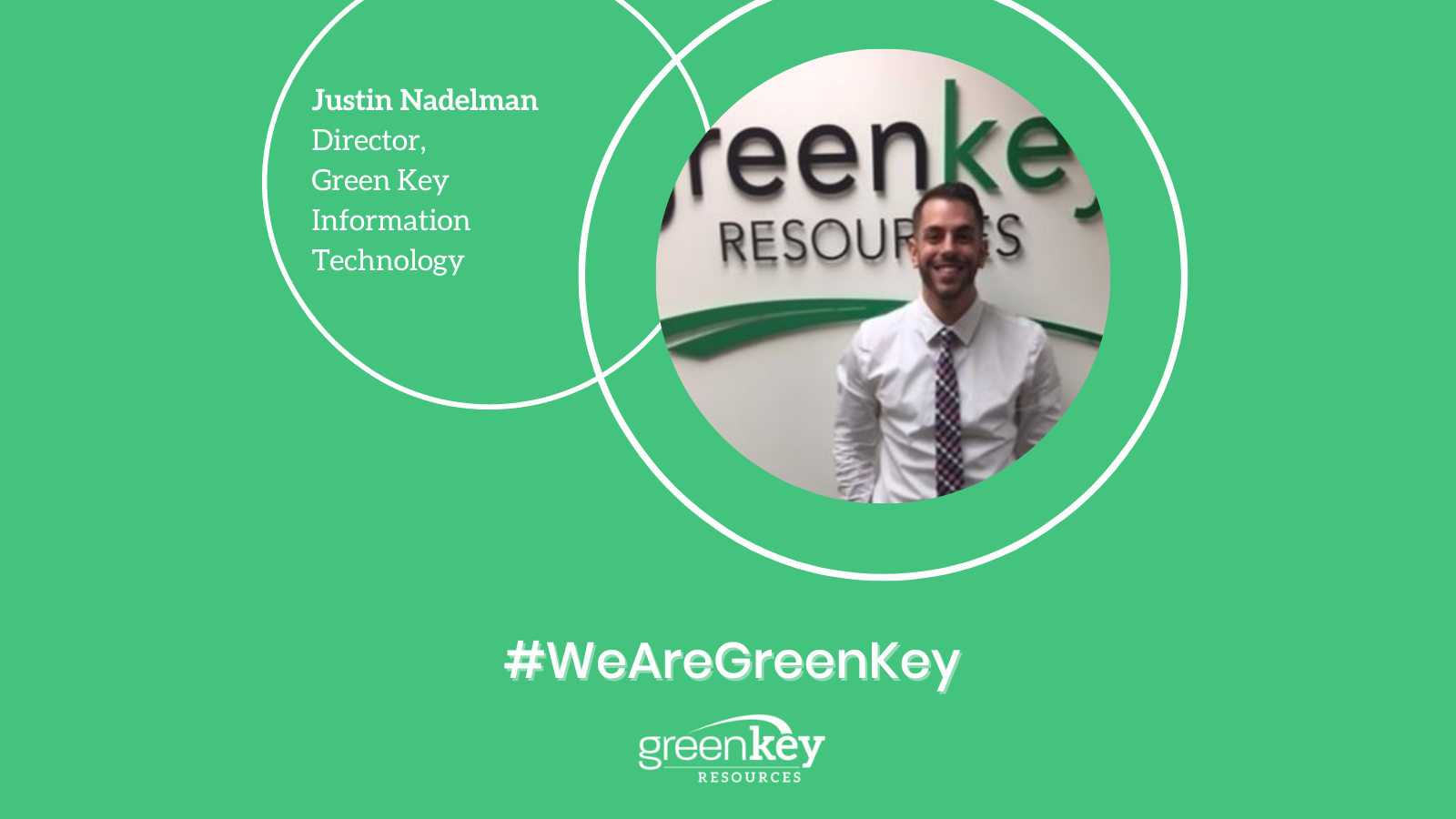Welcome back to #WeAreGreenKey, where we shine a spotlight on our powerhouse recruiting team.
Last week, we got the opportunity to chat with Justin Nadelman, Director of Information Technology. Almost seven years since he first joined Green Key, Justin has seized many growth opportunities in his role and truly embraced the culture of recruiting.
How did you first get started in tech recruiting?
I had worked in the insurance industry for about six or seven years prior to recruiting. My former colleague was working with Green Key to transition out of the insurance industry and referred me to Jessa Niemeyer. At the time, I knew nothing about tech or recruiting. I met with Jessa [Niemeyer] on Long Island, and eventually Matt [Schirano] & Rory [Valan], who I immediately hit it off with. This month will be 6.5 years at Green Key.
What was the transition from insurance to tech recruiting like?
The biggest difference was the dropping the transactional, cold calling that I used to do in insurance, as well as learning all the technical terminology. You have to really familiarize yourself with market trends and career progression in the field. It’s an exciting industry that I’m happy to be a part of, especially at Green Key, with the ability to build relationships and partnerships with my clients and candidates.
Are there any hiring trends going on in tech right now?
Cloud technology and business intelligence are very hot right now. Clients are in the process of migrating to cloud platforms (AWS/Azure/GCP) and Cloud/DevOps Engineers are in high demand. Companies are also building out their Business Intelligence presence to review internal metrics and data that are important to the business.
How can someone really break into the tech industry?
Breaking in is the hardest part. Entry-level internships provide real world experience that translates to a long-term role. Clients are looking for candidates who have done actual work in the field, rather than just their education. Certifications are also helpful. The CCNA holds a lot of weight, as well as CompTIA Security+. There are many online resources available for candidates online.
Do you have any new professional goals, either for yourself or your team?
Personally, I’d like to continue the management and mentorship aspect of my role. I love that I’ve been able to carve out my own path career-wise and hope to keep growing.




